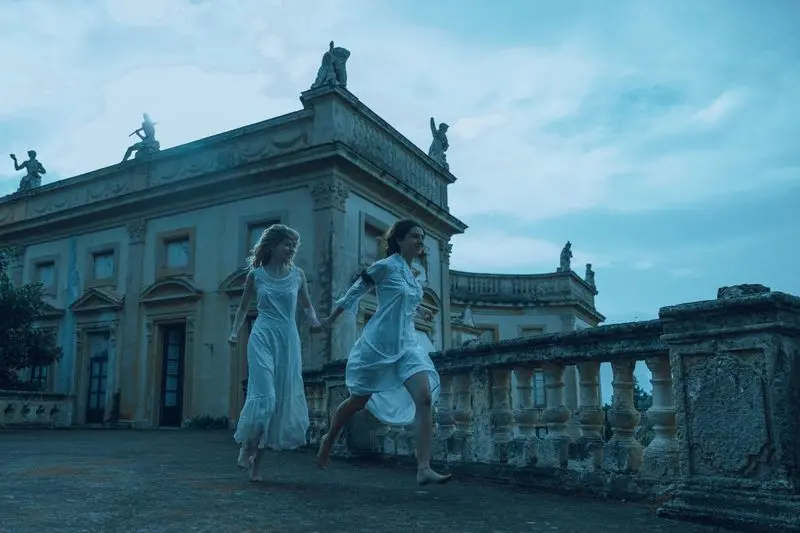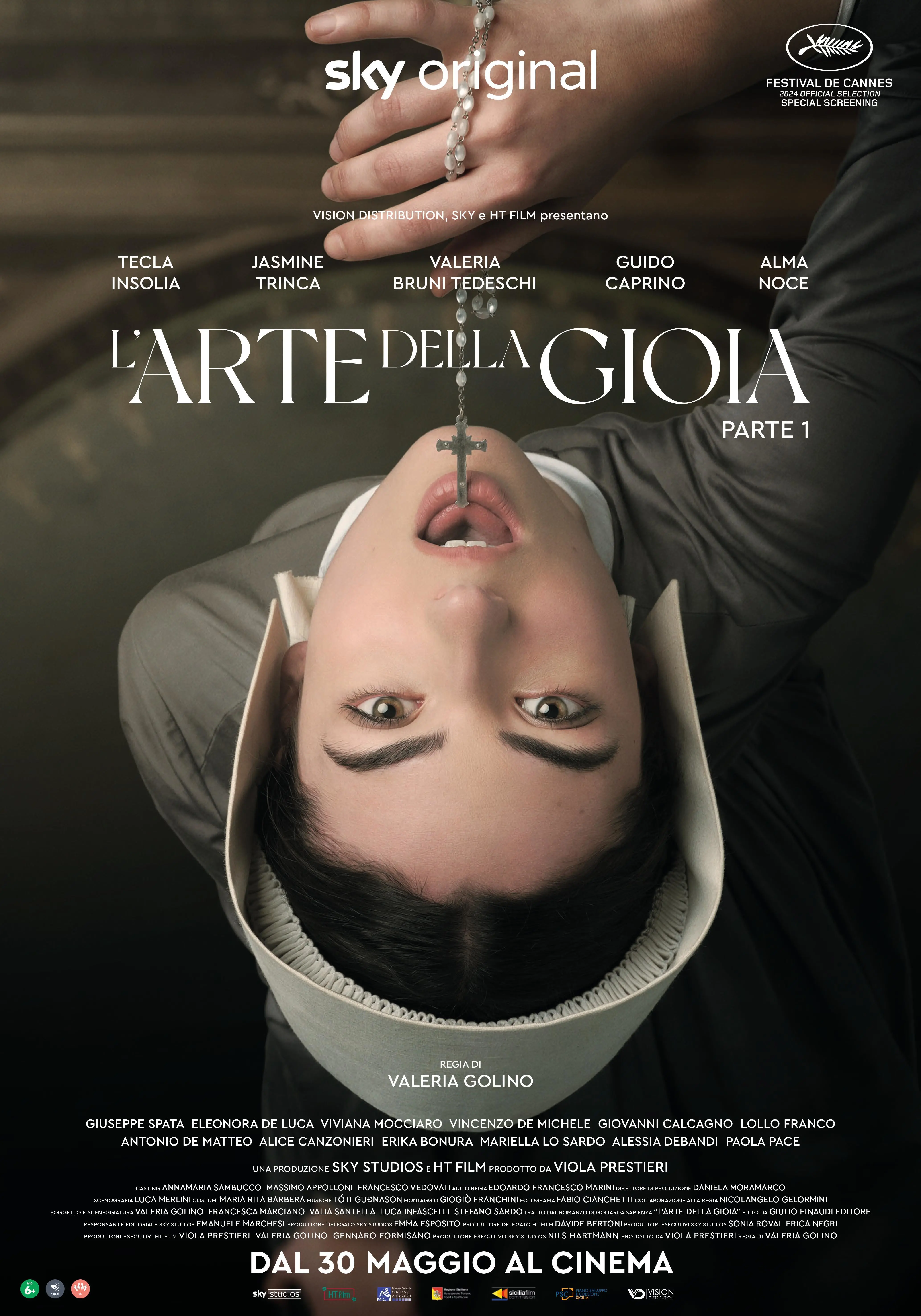
We use cookies
We use cookies and other tracking technologies to improve your browsing experience on our website, to show you personalized content and targeted ads, to analyze our website traffic, and to understand where our visitors are coming from.

The six-episode series L’arte della gioia (The Art of Joy), directed by Valeria Golino and based on the scandalous posthumous novel by Goliarda Sapienza, tells the story of a young girl from Sicily in the early 20th century as she discovers her sexuality and her desire for a better life.
Written by Golino with Luca Infascelli, Francesca Marciano, Valia Santella and Stefano Sardo, The Art of Joy follows the life of Modesta, born on January 1, 1900 into a poor family in an even poorer land, Sicily. Driven from childhood by an insatiable desire for knowledge, love and freedom, she will do anything to pursue her happiness, refusing to bend to the rules of the oppressive, patriarchal society to which she seems predestined. After a tragic accident tears her from her family, she is welcomed into a convent where her intelligence and stubbornness make her the protégé of the Mother Superior. Her path then leads to the Princess Brandiforti’s villa, where she becomes indispensable, growing in power on the estate. Her incessant movement towards emancipation is accompanied by her personal and sexual maturation which leads her to straddle the confines of the legal and illegal, seizing her right to pleasure and joy day after day. The cast includes: Tecla Insolia as unscrupulous Modesta; Jasmine Trinca as Mother Leonora; Guido Caprino as Carmine, manager of the Brandiforti estate; Alma Noce as Beatrice, the youngest child in the Brandiforti family whose matriarch, Princess Gaia is played by Valeria Bruni Tedeschi; Giovanni Bagnasco is Ippolito, Gaia's son and the Brandiforti heir; Giuseppe Spata is Rocco, their chauffeur.
The Art of Joy was filmed in Sicily and around Rome. The Orsini Odescalchi Castle in Bracciano (Rome) provided some of the interiors and exteriors for the convent where Modesta spent her childhood after being orphaned, while others (the exterior of the chapel, the courtyard with fountain overlooking a hexagonal staircase) belong to the Abbey of Santa Maria del Bosco in Contessa Entellina (Palermo), now a hotel. Other locations included Cefalù, Etna - the "mountain that trembles”, and the Simeto oasis, a protected natural area in the municipality of Catania.
On leaving the convent, Modesta moves to the country residence of Princess Brandiforti whose exterior is that of Villa Valguarnera in Bagheria (Palermo), although Villa Spedalotto and Villa Palagonia (Bagheria), Villa Trabia (Palermo) and Villa Parisi (Frascati) also provided locations for the Villa Brandiforti’s sumptuous interiors.
Modesta looks for Carmela, a peasant woman who keeps Prince Ippolito company, at the farmers’ cottages on the Brandiforti estate, which were shot in a farmhouse in Valle Fame, Palazzolo Acreide (Siracusa).
The last part of the film shows the elegant (and crowded) historic centre of Catania: via Crociferi, piazza Asmundo, via San Benedetto, piazza Duomo and piazza Dante, and the facade of Palazzo Biscari, the city residence of the Brandiforti. A little lost, Modesta wanders through the crowd and enters the Church of San Benedetto where she is enraptured by the fresco of the martyrdom of Saint Agatha by Giovanni Tuccari, and then focuses her attention on the imposing organ. On leaving the church, she is struck by the view of the sea.
The six-episode series L’arte della gioia (The Art of Joy), directed by Valeria Golino and based on the scandalous posthumous novel by Goliarda Sapienza, tells the story of a young girl from Sicily in the early 20th century as she discovers her sexuality and her desire for a better life.
Written by Golino with Luca Infascelli, Francesca Marciano, Valia Santella and Stefano Sardo, The Art of Joy follows the life of Modesta, born on January 1, 1900 into a poor family in an even poorer land, Sicily. Driven from childhood by an insatiable desire for knowledge, love and freedom, she will do anything to pursue her happiness, refusing to bend to the rules of the oppressive, patriarchal society to which she seems predestined. After a tragic accident tears her from her family, she is welcomed into a convent where her intelligence and stubbornness make her the protégé of the Mother Superior. Her path then leads to the Princess Brandiforti’s villa, where she becomes indispensable, growing in power on the estate. Her incessant movement towards emancipation is accompanied by her personal and sexual maturation which leads her to straddle the confines of the legal and illegal, seizing her right to pleasure and joy day after day. The cast includes: Tecla Insolia as unscrupulous Modesta; Jasmine Trinca as Mother Leonora; Guido Caprino as Carmine, manager of the Brandiforti estate; Alma Noce as Beatrice, the youngest child in the Brandiforti family whose matriarch, Princess Gaia is played by Valeria Bruni Tedeschi; Giovanni Bagnasco is Ippolito, Gaia's son and the Brandiforti heir; Giuseppe Spata is Rocco, their chauffeur.
The Art of Joy was filmed in Sicily and around Rome. The Orsini Odescalchi Castle in Bracciano (Rome) provided some of the interiors and exteriors for the convent where Modesta spent her childhood after being orphaned, while others (the exterior of the chapel, the courtyard with fountain overlooking a hexagonal staircase) belong to the Abbey of Santa Maria del Bosco in Contessa Entellina (Palermo), now a hotel. Other locations included Cefalù, Etna - the "mountain that trembles”, and the Simeto oasis, a protected natural area in the municipality of Catania.
On leaving the convent, Modesta moves to the country residence of Princess Brandiforti whose exterior is that of Villa Valguarnera in Bagheria (Palermo), although Villa Spedalotto and Villa Palagonia (Bagheria), Villa Trabia (Palermo) and Villa Parisi (Frascati) also provided locations for the Villa Brandiforti’s sumptuous interiors.
Modesta looks for Carmela, a peasant woman who keeps Prince Ippolito company, at the farmers’ cottages on the Brandiforti estate, which were shot in a farmhouse in Valle Fame, Palazzolo Acreide (Siracusa).
The last part of the film shows the elegant (and crowded) historic centre of Catania: via Crociferi, piazza Asmundo, via San Benedetto, piazza Duomo and piazza Dante, and the facade of Palazzo Biscari, the city residence of the Brandiforti. A little lost, Modesta wanders through the crowd and enters the Church of San Benedetto where she is enraptured by the fresco of the martyrdom of Saint Agatha by Giovanni Tuccari, and then focuses her attention on the imposing organ. On leaving the church, she is struck by the view of the sea.

L’arte della gioia (The Art of Joy) tells the dramatic and adventurous life of Modesta, born on January 1, 1900 into a poor family in an even poorer land, Sicily. Driven from childhood by an insatiable desire for knowledge, love and freedom, she will do anything to pursue her happiness, refusing to bend to the rules of the oppressive patriarchal society to which she seems predestined.